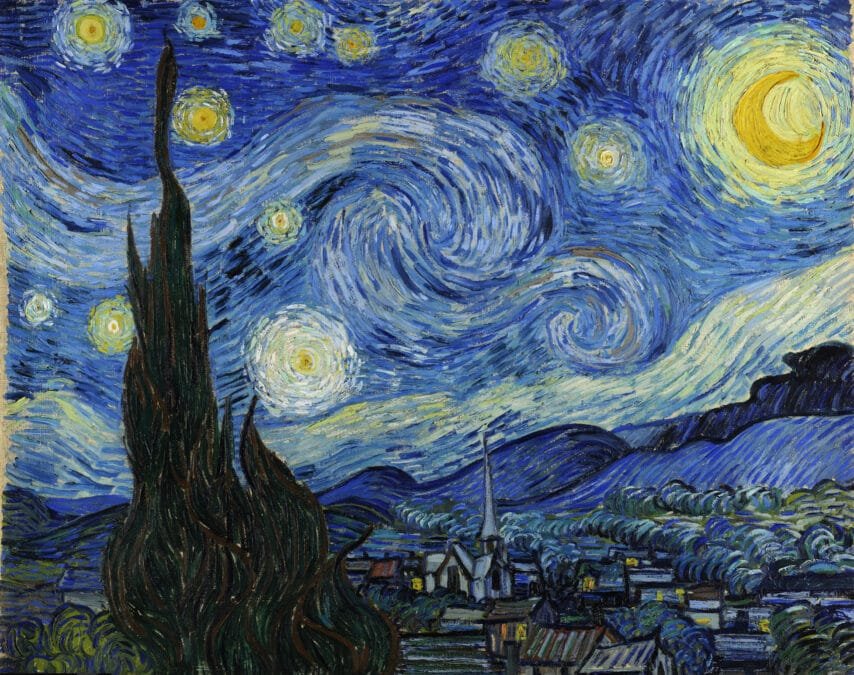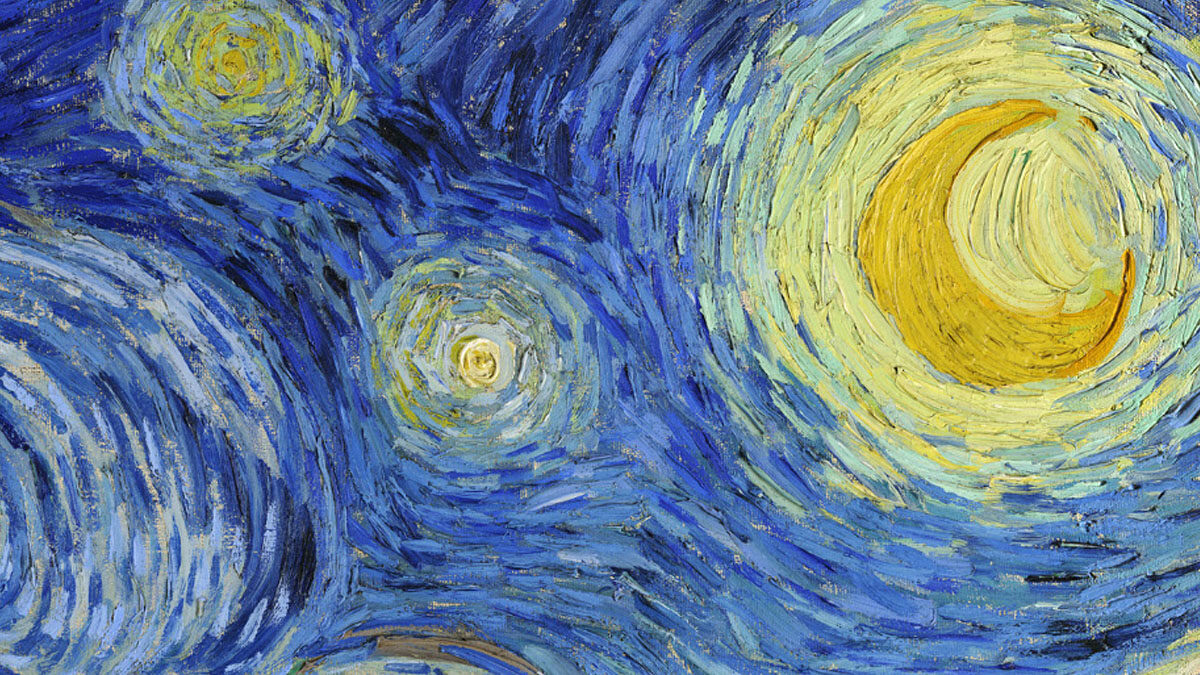A captured moment in time, capable of evoking deep emotions with each viewing, Vincent Van Gogh’s “The Starry Night” is easily one of the most recognized paintings of the Post-Impressionism movement. Visually bordering on the line between real and unreal, its beauty and timelessness resonates with so many people. Van Gogh uses color, movement, and texture to create an emotional and individual experience for each admirer in its presence.
Color is prominent as Van Gogh uses rich blues and yellows to create his nighttime sky and the bright vibrant stars illuminating the village below. Complementing his bold sky are hints of green and orange that cast the moon’s reflection upon the Saint-Remy village and show life within the buildings below. His bright moon and stars contrast against the deep blue sky creating an almost surreal appearance. Van Gogh’s exaggerated use of color, form and perspective, enabled him to create an almost dreamlike depiction of the view he saw from his window at Saint Paul.

Movement is implied through big swirls consisting of small layered directional brushstrokes that create an almost chaotic energy amid the calming blues and greens in the painting. Your eyes are drawn to the swirly patterns and instantly you follow this movement, taking you through every part of the painting as every stroke and shade merge calmly together. One can almost imagine standing near the cypress tree practically feeling the wind as it blows over the village and hillside. Van Gogh manages to elicit a state of tranquility despite the swirly frenetic movements, in an almost hypnotic way as you continue to gaze into the painting. One can perceive Van Gogh’s melancholy and foreboding he may have been experiencing personally, but there is also a feeling of wistful hopefulness and the desire to show beauty in night landscape.
Click here to view, The Starry Night
A technique Van Gogh used often in his works was Impasto. In this process, paint is applied on a surface in very thick layers, making the brush strokes visible. When dry, this provides texture allowing the paint to appear like it is coming out of the canvas. Using impasto texture in “Starry Night”, each of the lines and contours seem to project, giving the painting a realistic and interactive feel allowing one to immerse themselves in the ethereal landscape. I was able to view this painting while visiting the Museum of Modern Art in New York years ago. Having the opportunity to observe and admire this painting up close was an unforgettable experience. In conclusion, it is through Van Goh’s use of color, movement, and texture, that he is able to create an emotional experience for the viewer by capturing the essence of beauty in his nighttime landscape. Years later we can see how he moved paint to better express himself with every bold and dramatic brushstroke, and just how much emotion he projected into his paintings. A Starry Night shows there is always light even in the darkest of times.
A Starry Night lives in the Museum of Modern Art in New York City. Find out more about The Starry Night at mo.ma/starrynight
